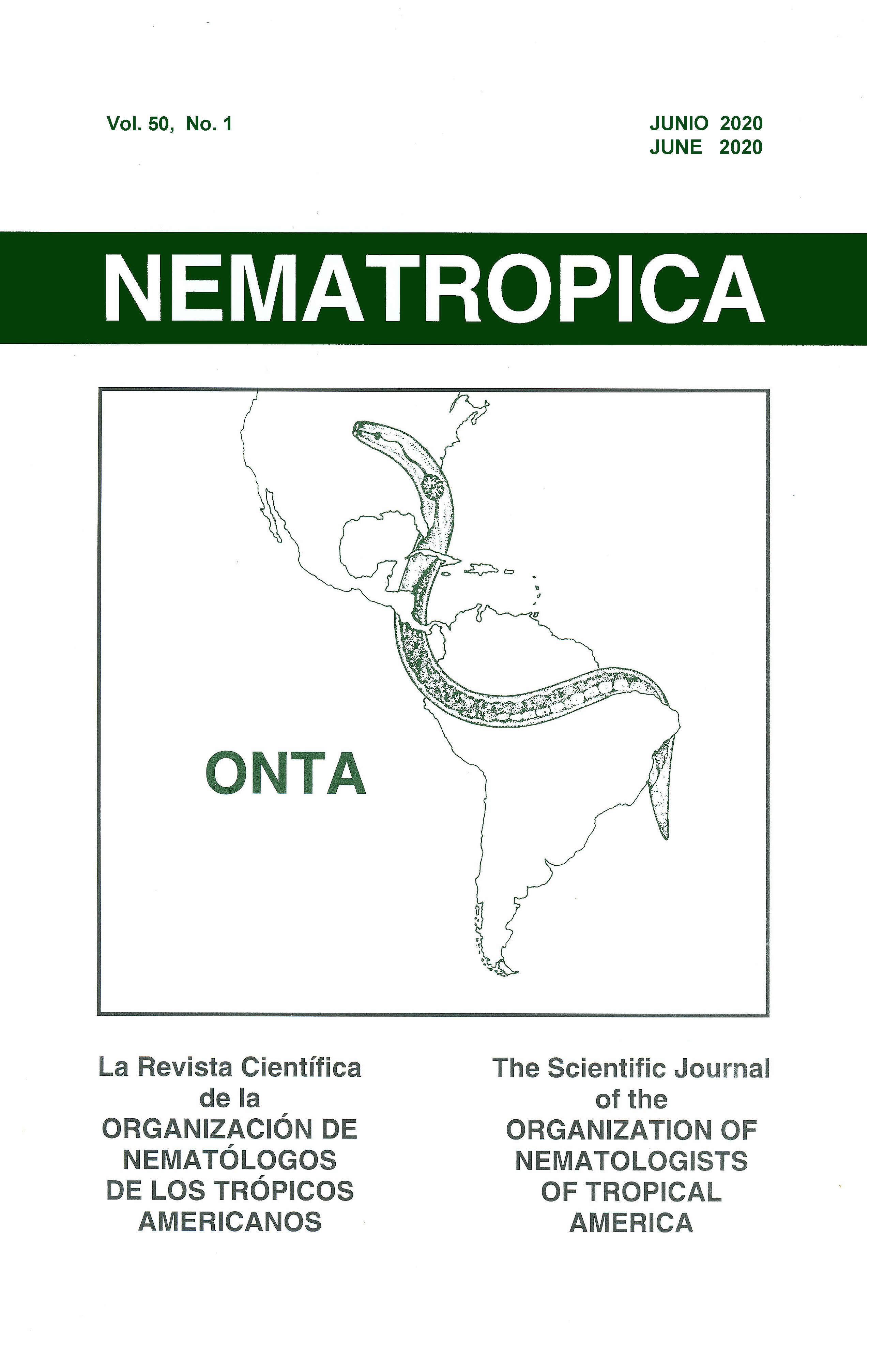DISTRIBUTION, PREVALENCE, AND SEVERITY OF DAMAGES CAUSED BY NEMATODES ON YAM (DIOSCOREA ROTUNDATA) IN NIGERIA
Resumo
Nigeria is the main yam-growing country of the world. In the country, various plant-parasitic nematodes have been reported constraining yam production and the storability of tubers. This study established the damage level of nematodes on white yam tubers (Dioscorea rotundata) across the major production areas in the country for management purposes. Incidence and severity of symptoms (cracking, dry rot, and galling) associated with nematodes were assessed on 1,114 yam heaps (181 vendors) from 23 markets and on 2,502 tubers from 26 farmer storage areas (yam barns) in the Humid Forest (HF), Derived Savanna (DS) and Southern Guinea Savanna (SGS) agro-ecological zones (AEZ). On yam heaps, the symptom incidence averaged 55%, 35%, and 6% for galls, dry rot, and for cracks, respectively. Only the incidence of dry rot was significantly different (P<0.0001) across the AEZ. On yam tubers, the incidence averaged 24%, 8%, and 2% for galls, dry rot, and for cracks, respectively. The incidence for galls was higher in the SGS than in the DS (P=0.0018) whereas the incidence of cracks was higher in the DS than in the SGS (P=0.0080). The actual values of symptom severity were, in general, low in the AEZ compared with the predicted values except for dry rot. A significant positive correlation was found between galls and Meloidogyne and between dry rot and Scutellonema. Pratylenchus was also recovered from a few yam tubers; however, no link with symptoms on yam tubers could be established. Vendors and farmers, based on the answers from a questionnaire, were very familiar with nematode symptoms on yam tubers, but awareness of nematodes was low. This study shows that Meloidogyne and Scutellonema are the major nematode constraints to yam production in the three AEZ of Nigeria and calls for effective yam nematode management in Nigeria and in other yam-producing countries.

